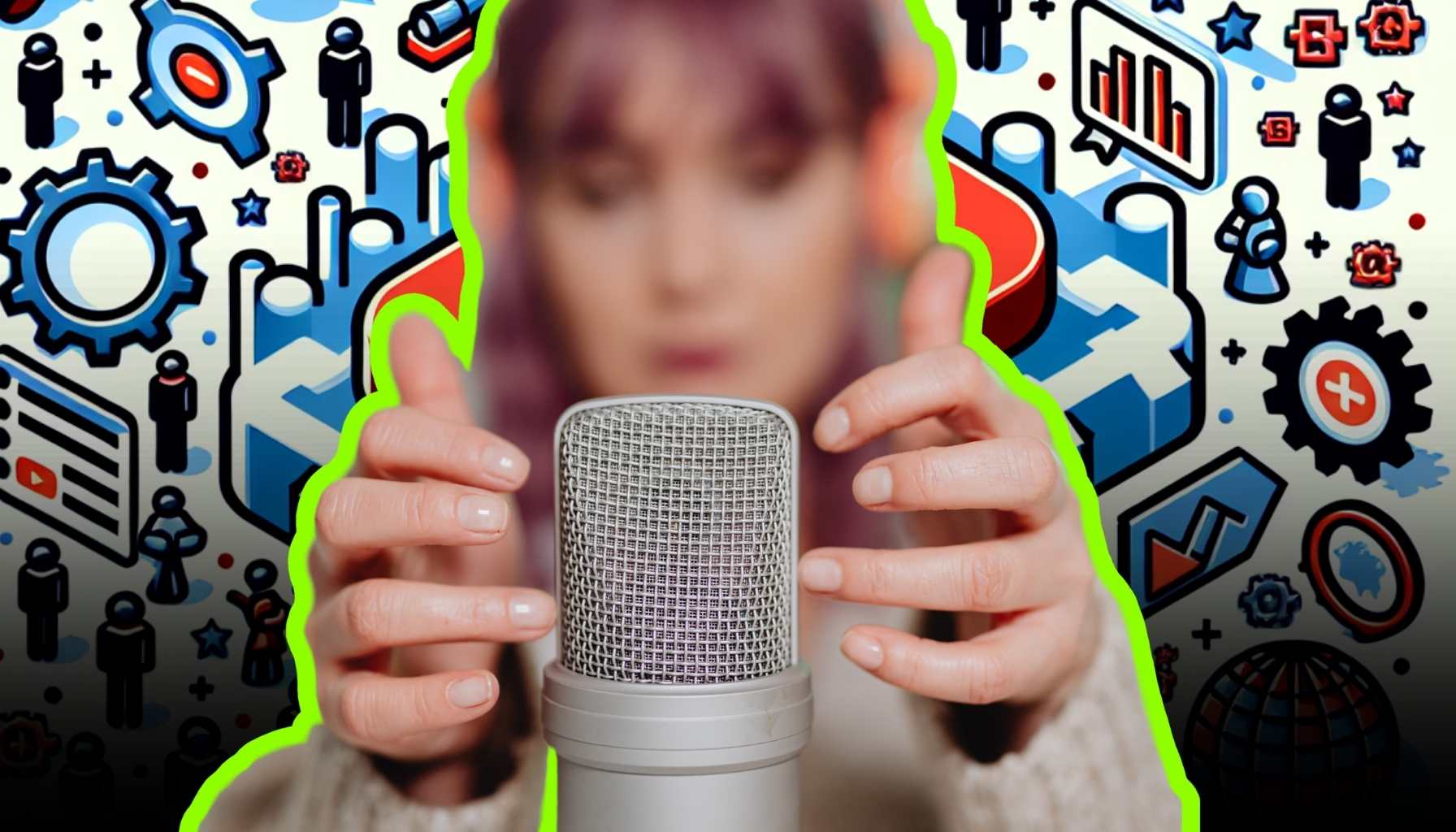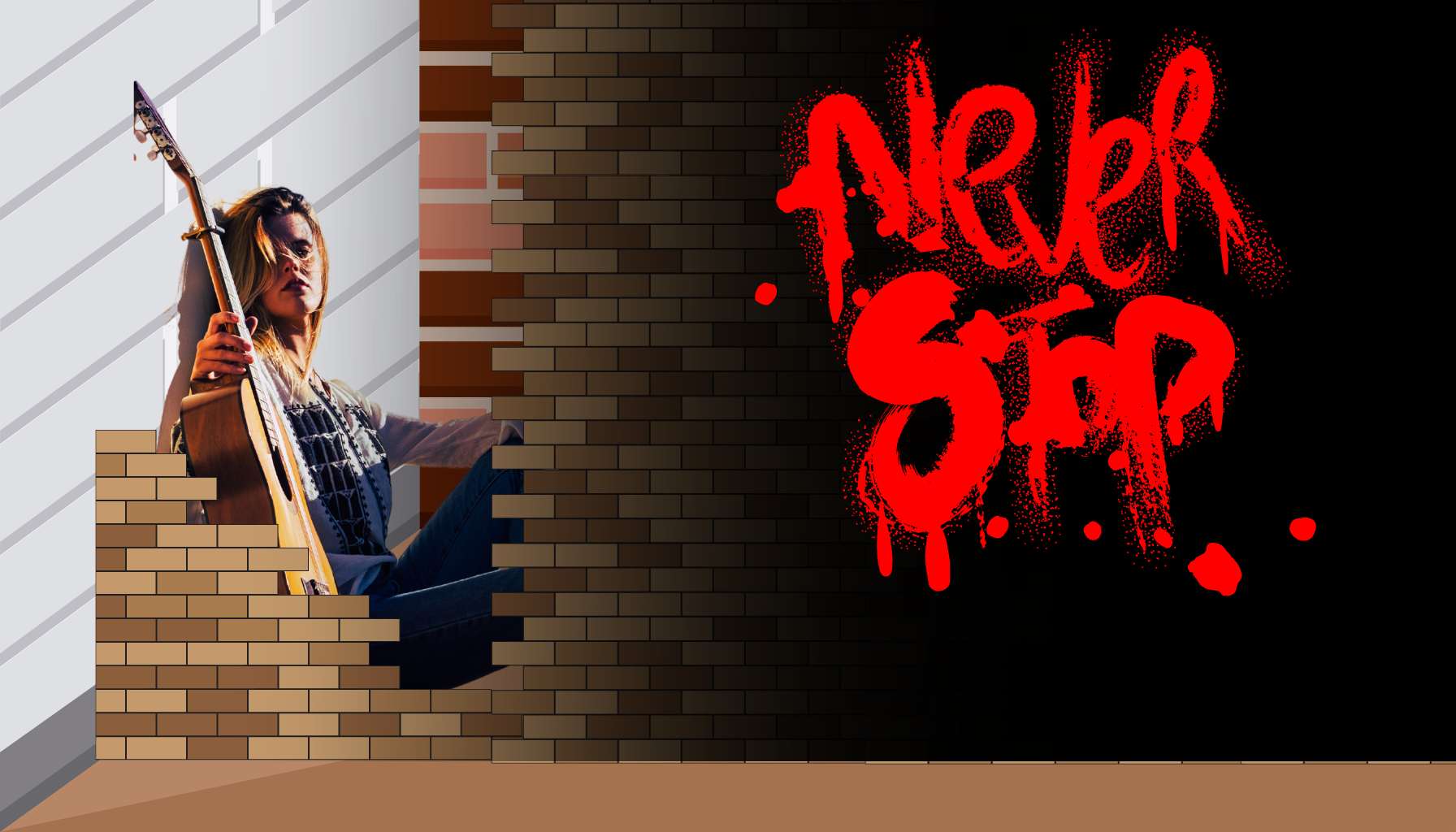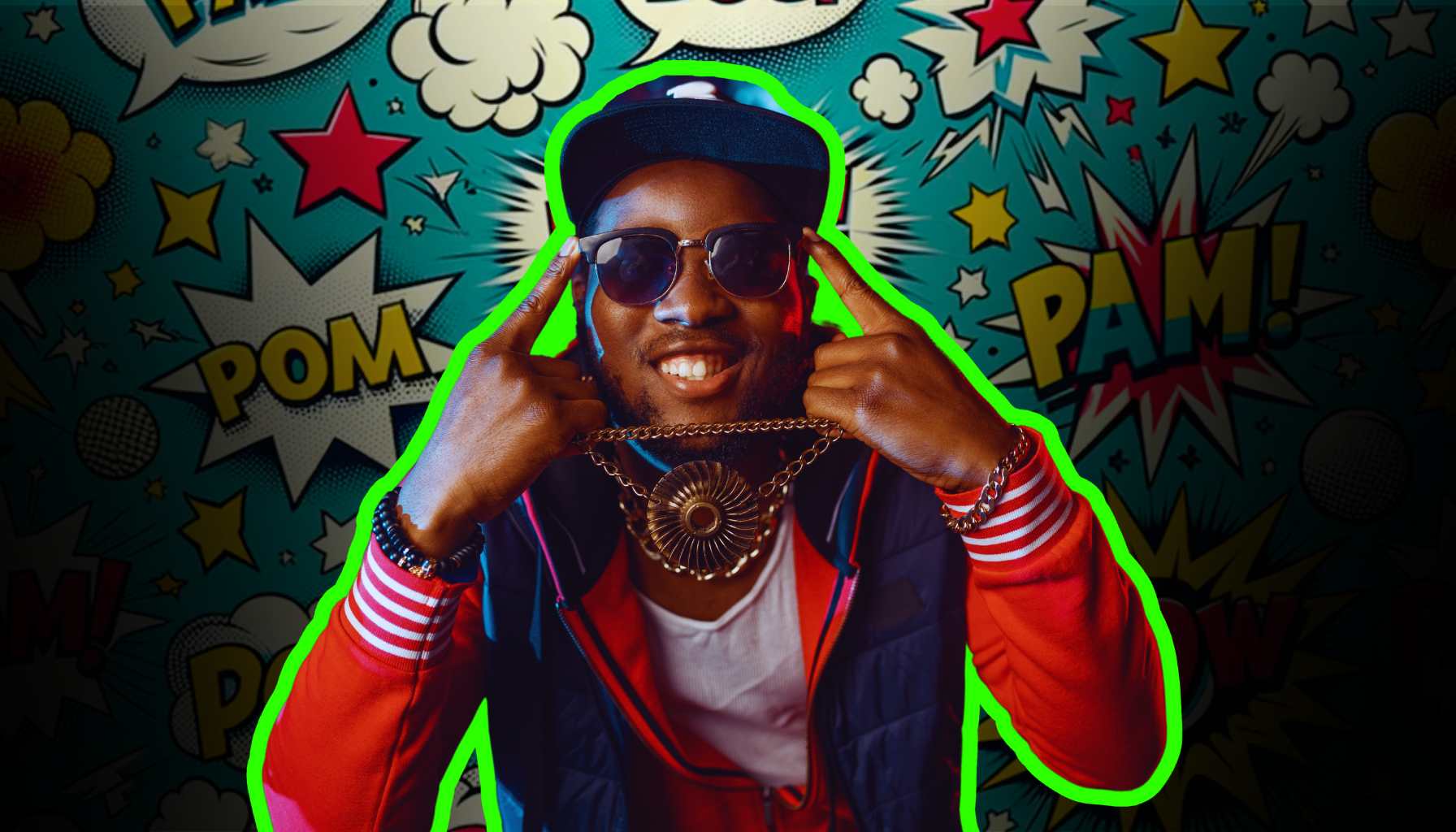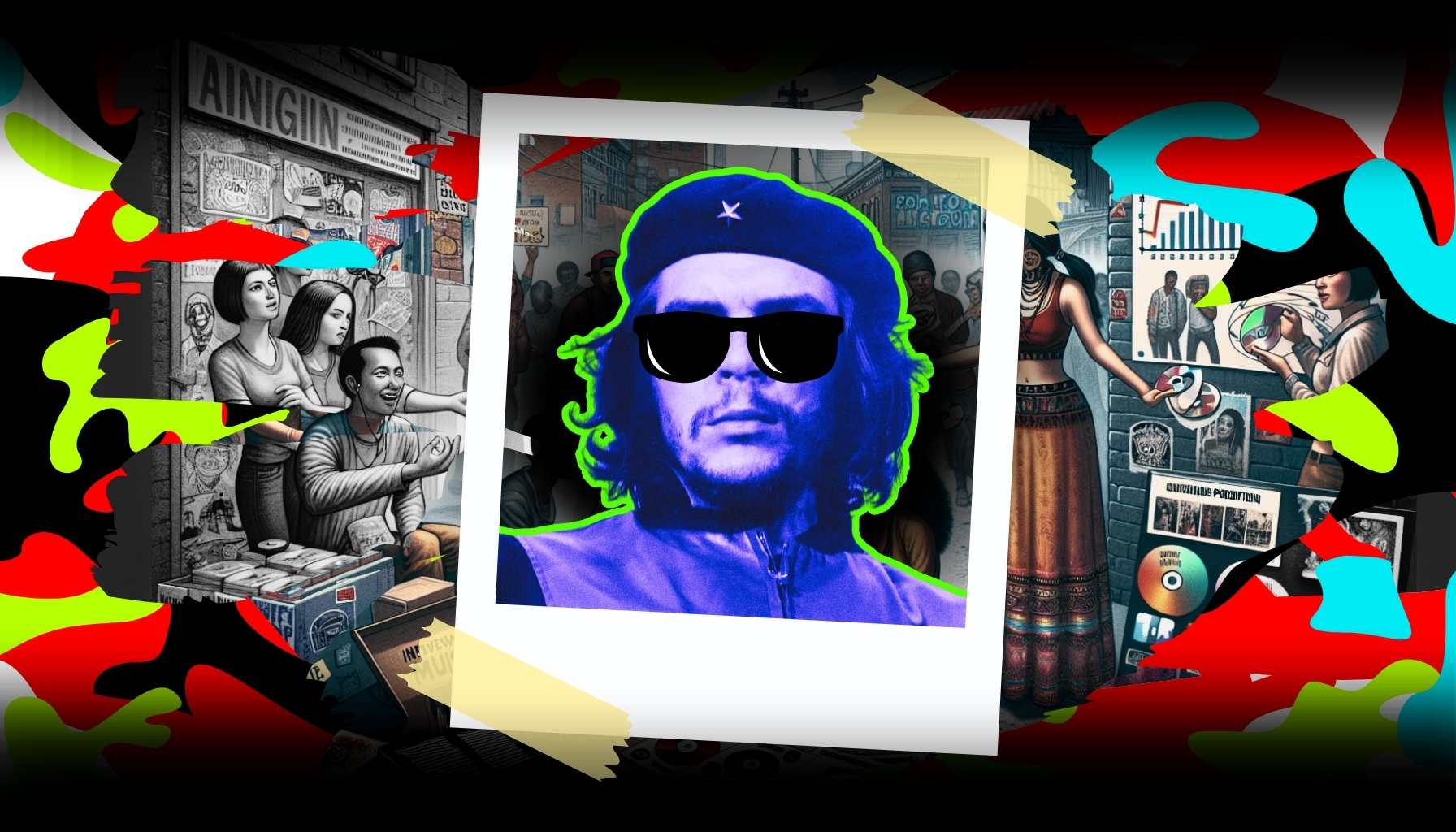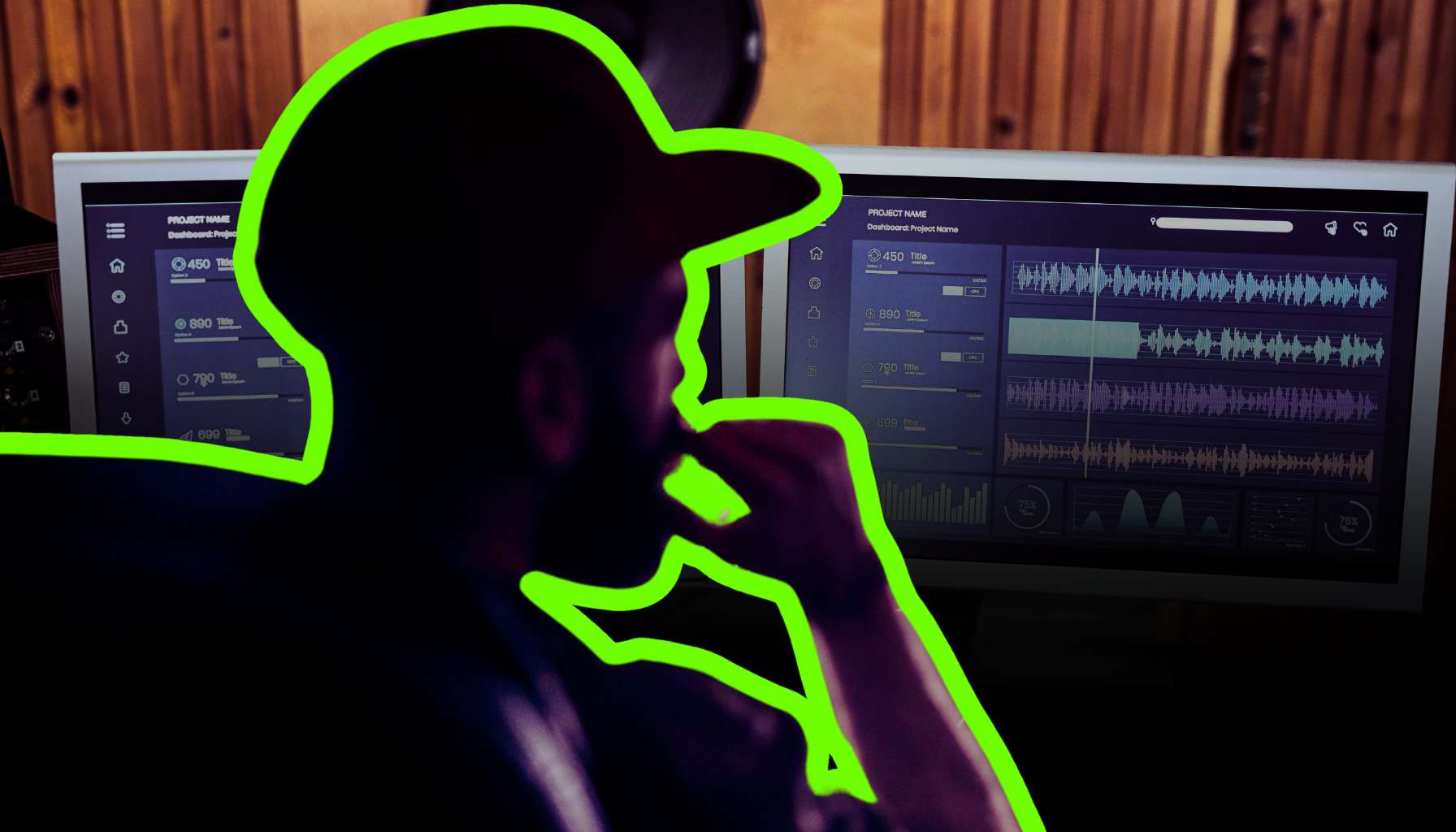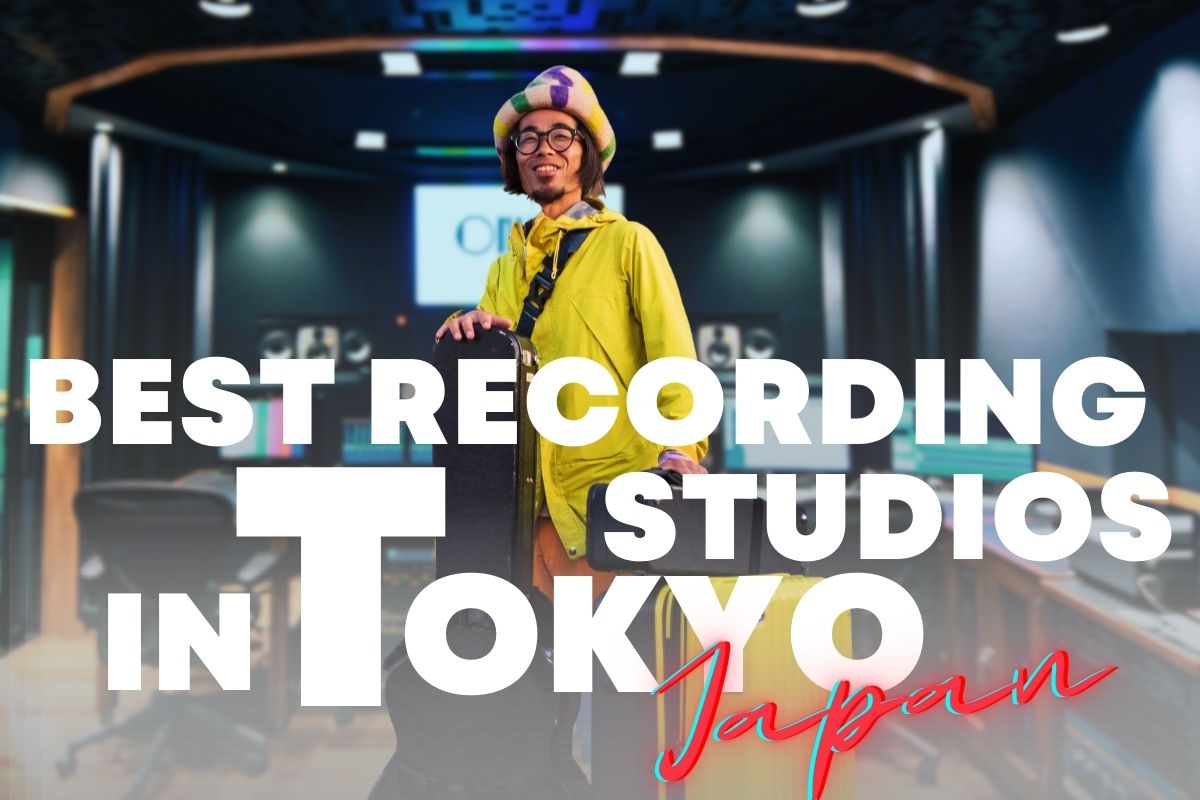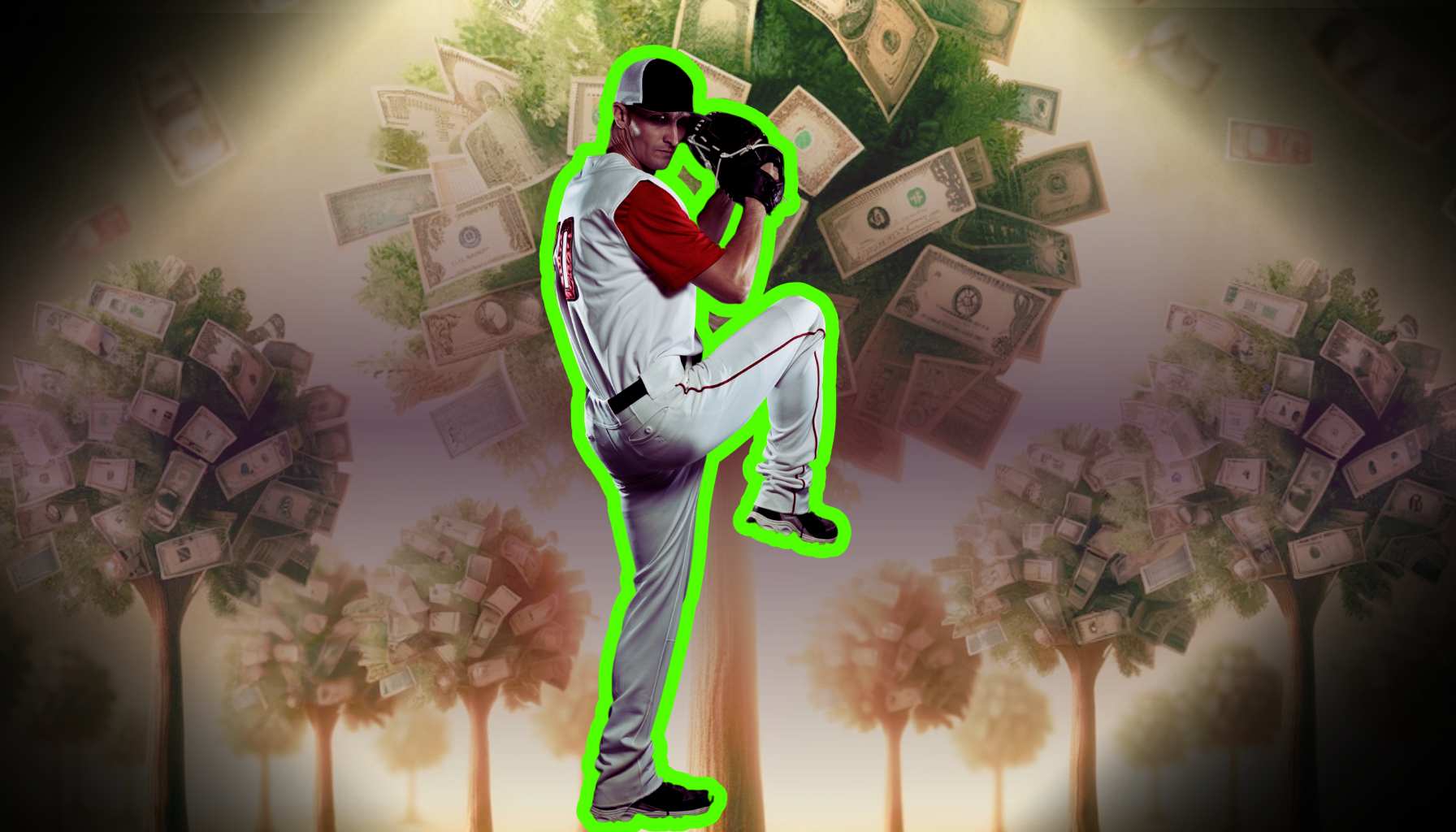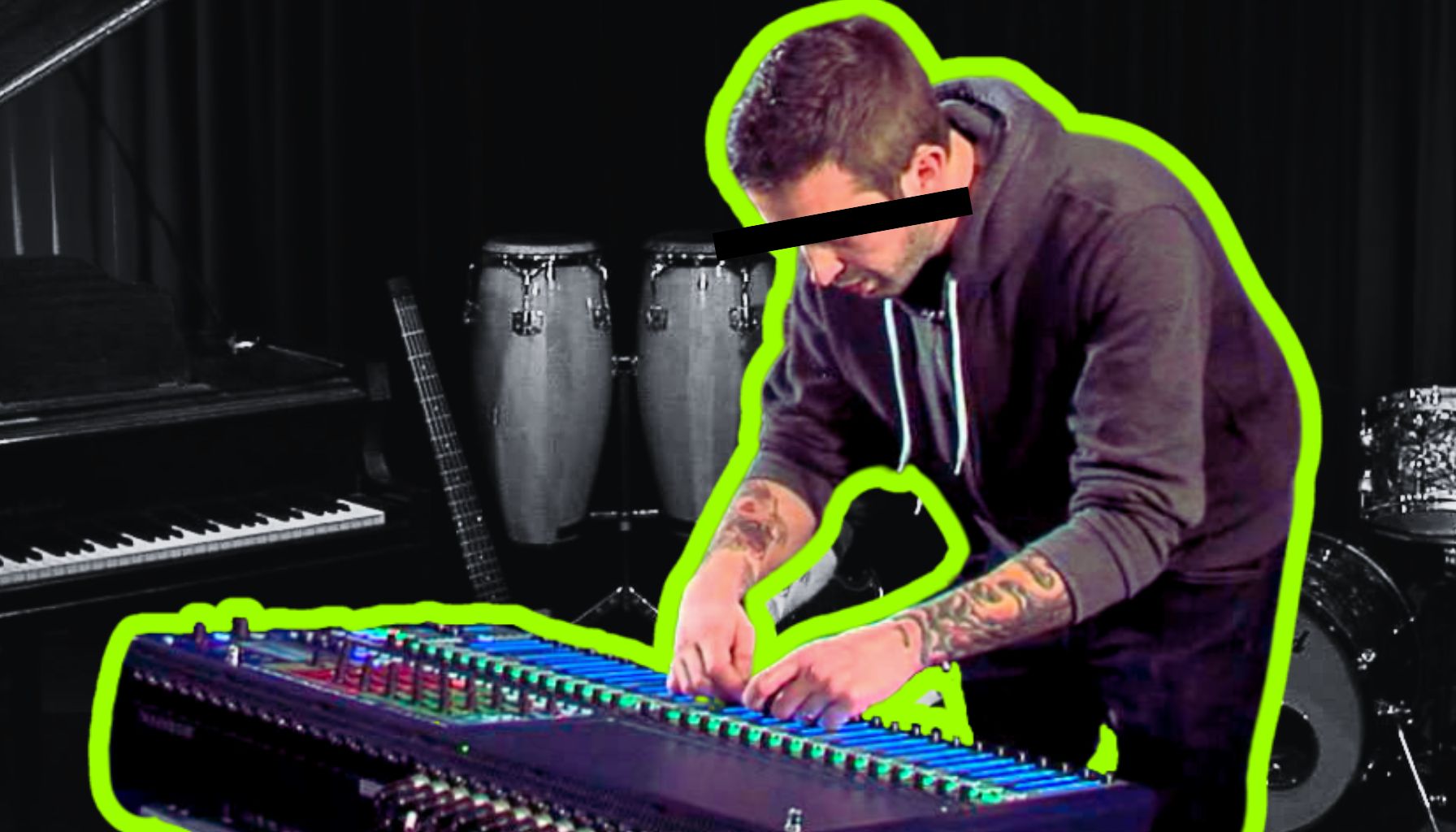The Importance of Effective Music Advertising
Ever wondered why some tunes turn into earworms that you just can’t shake, while others fade into the background noise of your daily life? A lot of it has to do with music advertising – that magical realm where art meets market.
But let’s be real, not all advertising is created equal, and for every chart-topping hit buoyed by brilliant marketing, there’s a graveyard of songs that never quite made it due to advertising missteps.
The Role of Advertising in an Artist’s Success
Advertising can be the wind beneath your wings in the music industry. It’s the difference between playing to a packed house and serenading an empty room. A well-crafted ad campaign can catapult artists from obscurity to stardom, expanding their fan base and filling up their coffers.
But here’s the kicker – it’s not just about throwing cash at flashy ads; it’s about strategy, understanding your audience, and, most importantly, avoiding those common pitfalls that can turn your advertising dollars into dust.
Common Pitfalls in Music Marketing
We’ve all seen them – ads that make you cringe or, worse, ignore. The music biz is rife with marketing blunders, from ads that lack a clear message to those that try too hard to be cool and end up as a hot mess. Artists often fall into the trap of believing that any publicity is good publicity, but a bad ad can be like that one off-key note during a live performance – it sticks out, and not in a good way.
Understanding Bad Ads
So, what makes an ad go from bad to worse? It’s often a combination of being tone-deaf (pun intended) to the audience’s needs, trying to be everywhere at once, and forgetting that quality trumps quantity. Ineffective advertisements lack the personal touch and fail to resonate with the listener, making them as forgettable as last year’s one-hit-wonder.
Characteristics of Ineffective Advertisements
Ineffective ads are like that friend who talks a lot but never really says anything – they’re full of sound and fury, signifying nothing. They might be too generic, too confusing, or too disconnected from the artist’s brand. And let’s not forget those that are all about the hard sell; they push so aggressively that they end up pushing the audience away.
The Cost of Bad Advertising
Bad advertising isn’t just ineffective; it’s expensive. It can drain an artist’s budget faster than a free bar at a rock concert. The cost isn’t just monetary; it can also tarnish an artist’s image and alienate potential fans. In the worst-case scenario, it can even become a meme for all the wrong reasons (looking at you, Fyre Festival).
Objective of the Article
This article isn’t just about pointing fingers at the bad stuff; it’s about lighting the way towards the good. We’ll educate artists on the advertising mistakes that can derail their careers and provide alternatives to those all-too-common poor advertising choices. Think of it as a roadmap to marketing success, minus the potholes.
Educate Artists on Advertising Mistakes
Consider this a masterclass in what not to do when it comes to music advertising. We’ll break down the blunders and dissect the disasters so you can sidestep the pitfalls and stride confidently towards advertising victory.
Offer Alternatives to Common Poor Advertising Choices
For every “don’t,” there’s a “do” waiting in the wings. We’ll offer up tried-and-tested strategies that can turn your advertising game around. From harnessing the power of social media to crafting campaigns that actually speak to your audience, we’ve got the insider tips that can make your next ad a hit.
Generic Social Media Ads: The Allure and the Pitfalls
Picture this: you’re scrolling through your feed, and bam! You’re hit with an ad for a new track by an artist you’ve never heard of. You pause, shrug, and scroll on. Why? Because that ad, my friend, was as generic as a bar code, lacking any personal touch to make you stop and listen. And that’s precisely where many artists trip up in the high-stakes race to get their music heard.
The Allure of Social Platforms
Social media platforms are like the modern-day gold rush for musicians – they promise fame, fans, and fortune, all with the click of a button. With their massive popularity and reach, it’s easy to see why artists flock to these digital stages, posting content and running ads in the hopes of striking it big. But here’s the rub: assuming that simply being on social media equates to easy success is like thinking you’ll find gold just by showing up with a pan.
Popularity and Reach
Yes, social media platforms are where the party’s at. With billions of users, the potential audience is enormous. But here’s the kicker: just because you can reach the whole world doesn’t mean the whole world wants to listen. That’s where targeted campaigns come in – or, more often than not, should come in but don’t.
Assumption of Easy Success
Many artists fall for the siren song of social media, believing that a few posts and paid ads are a one-way ticket to Viralville. But without a solid strategy, they’re more likely to end up in Nowheresville. It’s not just about being present; it’s about being present in the right way.
Pitfalls of Non-Targeted Campaigns
Non-targeted campaigns are the equivalent of shouting into the void. Sure, you’re making noise, but is anyone really listening? Without audience segmentation, you might as well be throwing your ad budget into a black hole, hoping for a miracle.
Lack of Audience Segmentation
One size fits all? Not in music marketing. Your ad needs to reach the right ears – people who are actually interested in your genre, style, or vibe. Lack of audience segmentation is like playing a death metal track at a folk festival; you’re just not going to win that crowd over.
Low Engagement Rates
Low engagement rates are the tell-tale sign of a non-targeted campaign. If your likes, shares, and comments are as scarce as a decent melody in a mumble rap song, it’s time to rethink your strategy.
The Importance of Ad Personalization
In the symphony of social media, personalization is the solo that stands out. It’s about crafting a message that resonates with your specific audience – a message that feels like it was written just for them because, well, it was.
Crafting a Message for Your Audience
Your music tells a story, and your ads should too. They should speak directly to the hearts and headphones of your potential fans. Personalized ads are the love letters of the advertising world – they make the recipient feel special and understood.
Tools for Better Targeting
Thankfully, we’re not throwing darts blindfolded here. There are tools aplenty for better targeting – from analytics to ad managers that allow you to pinpoint demographics, interests, and behaviors. Using these tools is like tuning your guitar before a gig; it just makes everything sound better.
As we segue from the digital realm to the more traditional media landscape, remember that the key to successful advertising is not just in the medium you choose, but in the message you deliver and the audience you target. Up next, we’ll tackle the myth of exposure and the reality of measuring ROI in overpriced traditional media spots. Because, let’s face it, not all that glitters in the spotlight is gold – sometimes it’s just a pricey pyrotechnic that fizzles out too fast.
Overpriced Traditional Media Spots: The High Cost of Low Impact
Transitioning from the digital jungle of social media to the more traditional media savannah, we encounter a different breed of advertising beasts: the overpriced TV and radio spots. In an era where skipping ads is as common as skipping stones, one has to wonder: are these old-school methods worth the hefty price tag, or are they just a quick way to burn through your budget with the heat of a supernova?
The Myth of Exposure
The allure of traditional media is like the siren song for artists – it promises a vast ocean of listeners and viewers. But here’s the twist: just because your ad is playing to a sea of people doesn’t mean they’re actually tuning in. And measuring the actual ROI? That’s often as elusive as a catchy chorus in a sea of mumble rap.
TV and Radio Reach
TV and radio used to be the titans of reach, the gatekeepers of fame. But with today’s fragmented media consumption, their omnipotence is waning. Sure, they can still pull in audiences during prime time, but with ad-skipping tech and streaming services, their reach isn’t what it used to be.
Measuring Actual ROI
Measuring ROI in traditional media is like trying to nail jelly to the wall. It’s slippery, it’s messy, and it’s frustrating. Without clear metrics, you’re left with vague impressions and the haunting question: “Did anyone who heard my ad actually care?”
Cost vs. Effectiveness
In the battle of cost versus effectiveness, traditional media spots often end up on the losing side. They can gobble up your budget faster than a drum solo in a metal song, leaving you wondering where all the money went.
Comparing Traditional and Digital Costs
When you stack traditional media costs against digital, the contrast is stark. Digital advertising offers targeted, measurable, and often more cost-effective options. It’s like choosing between a scalpel and a sledgehammer for a paint job – precision usually wins.
Assessing the Value for Money
Assessing the value for money in traditional media is a tough gig. You might get the exposure, but if it doesn’t translate into fans or sales, it’s as valuable as an autotune device at an acapella concert.
Navigating Modern Media Choices
Navigating the modern media landscape requires a savvy blend of old and new. It’s not about abandoning traditional media entirely but about finding the sweet spot where it complements your digital efforts.
Alternative Advertising Channels
Alternative advertising channels are like the indie labels of marketing – they might not have the flash of the majors, but they can connect you with niche audiences who are more likely to vibe with your sound. Think podcasts, influencer collaborations, or even targeted direct mail.
Integration with Digital Strategies
Integrating traditional media with digital strategies is like mixing the classic sounds of vinyl with the crispness of digital audio – it’s all about harmony. For example, using a TV spot to drive traffic to your social media or website can amplify your reach while keeping the engagement high.
Pay-to-Play Gigs and Promotions: The High Cost of Playing the Game
As we turn down the volume on traditional media’s siren song, we face another tune that’s equally seductive and potentially deceptive: pay-to-play gigs and promotions. It’s the old “spend money to make money” mantra, but when does investment turn into a sinkhole, especially for emerging artists trying to get their big break?
Understanding Pay-to-Play
Pay-to-play is the music industry’s equivalent of a toll road. You pay upfront for the opportunity to perform or get promoted, with the promise of exposure and future gigs. Sounds like a fair deal, right? Well, not so fast. The reality can be as disappointing as a one-hit-wonder’s follow-up album.
Definition and How It Works
In essence, pay-to-play requires you to buy a certain number of tickets or bring a minimum crowd to secure a spot on stage. Alternatively, it might mean paying for a service that promises to promote your music to radio stations, labels, or playlists.
Risks for Emerging Artists
For emerging artists, the risks are as high as the final chorus in a power ballad. You might shell out cash with no guarantee of a return on investment, or worse, play to a room emptier than a record store on streaming day.
Evaluating Opportunities
Every opportunity comes with a price tag, but not all are worth the cost of admission. Evaluating these deals requires a keen eye and a bit of skepticism—after all, if the promise seems too good to be true, it might just be the industry’s version of snake oil.
Recognizing Exploitative Deals
Recognizing exploitative deals is key to navigating the pay-to-play minefield. If the cost seems exorbitant or the terms one-sided, it might be time to back out of the green room and reconsider.
Calculating Potential Benefits
Calculating potential benefits involves a mix of optimism and hard-nosed math. Will the exposure lead to more fans, more gigs, or more sales? Or will it just lead to more expenses? The answers to these questions can help you hit the right note when deciding whether to pay up or pack up.
Building Genuine Relationships
In the end, the music biz is about relationships, not just transactions. Building genuine connections with promoters and venues can lead to organic growth that no amount of pay-to-play can buy.
Networking with Promoters
Networking with promoters is like jamming with other musicians—it’s about finding a groove and creating harmony. These relationships can lead to opportunities that are based on talent and mutual respect, not just the size of your wallet.
Organic Growth Strategies
Organic growth strategies are the grassroots of your career. They’re about building a fanbase one show, one song, and one listener at a time. This approach might be slower than the quick fix of pay-to-play, but it’s more sustainable—like a classic vinyl record that keeps spinning hits for decades.
In the next section, we’ll explore the playlist placements that promise the moon but might just leave you lost in space. Because when it comes to your music career, you shouldn’t have to pay for the stage—the spotlight should be earned.
Misleading Streaming Promotions: The Playlist Mirage

Just as we’ve strummed past the discordant tune of pay-to-play schemes, we arrive at the next verse of pitfalls in music marketing: misleading streaming promotions. It’s a world where the promise of playlist placement and streams glitters like gold, but can sometimes be as genuine as lip-syncing at a live concert.
The Promise of Playlists
The allure of landing on a popular playlist is undeniable. It’s like getting an invite to the coolest party in town—everyone who’s anyone will hear your track. But what happens when the playlist is less of an A-lister’s bash and more of a deserted dancefloor?
The Impact of Playlist Placement
The right playlist placement can be a game-changer, catapulting an unknown artist to stardom faster than you can say “viral hit.” It’s the modern-day radio play, the digital nod that says, “You’ve made it.”
The Reality Behind Paid Playlist Inclusion
But here’s the catch: not all playlist placements are created equal. Some services sell the dream of exposure, yet deliver as much impact as a silent disco without headphones. It’s crucial to differentiate the legitimate opportunities from the money pits.
Bot Streams and Artificial Engagement
In the quest for streaming success, some artists fall into the trap of bot streams and artificial engagement. It’s like stuffing your concert with mannequins instead of fans—sure, it looks like you’re playing to a full house, but there’s no heart, no applause, no encore calls.
Identifying Fake Promotions
Identifying fake promotions is essential. If a service guarantees a specific number of streams or followers for a price, it’s likely as authentic as a folk singer at a rave. Authentic engagement is about connection, not just numbers.
The Repercussions of Fraudulent Streams
The repercussions of fraudulent streams are severe. Not only do they violate streaming platforms’ terms of service, but they can also damage your reputation faster than a stage dive gone wrong. Real success is built on genuine fans, not bots.
Authentic Growth on Streaming Platforms
As we navigate the treacherous waters of streaming promotions, remember that the most enduring success comes from authentic growth strategies. It’s about connecting with real listeners who’ll play your songs because they love them, not because an algorithm told them to.
Strategies for Legitimate Playlisting
Strategies for legitimate playlisting involve crafting high-quality tracks and networking with playlist curators. It’s about earning your spot through talent and persistence, like an indie band tirelessly touring until they hit the big time.
Engaging with Your Actual Listeners
Engaging with your actual listeners is the cornerstone of sustainable growth. It’s the difference between a one-hit-wonder and an artist with a loyal fanbase that sticks around for the B-sides and deep cuts.
In the next section, we’ll dive into the world of band tees, hats, and hoodies to uncover how ineffective merchandising campaigns can leave your brand singing to an empty room. Let’s ensure your merch table is as hit-worthy as your music, without falling into the trap of common merchandising mistakes.
Ineffective Merchandising Campaigns: More Than Just a T-Shirt
Cruising past the mirage of misleading streaming promotions, we encounter yet another crossroad in our music marketing journey: ineffective merchandising campaigns. It’s a world where the line between swag and swindle can be as thin as the vintage vinyl in your local record shop. Let’s face it, merch can be a cash cow or a money pit, and knowing the difference is key to your brand’s harmony.
Merchandise as a Marketing Tool
Band merch isn’t just about slapping your logo on a coffee mug and calling it a day. It’s an extension of your artistic expression, a tangible connection between you and your fans. But beware, the road to merch success is littered with the debris of missteps and miscalculations.
The Potential of Band Merch
The potential of band merch is massive. It’s a walking billboard, a statement of fandom, and if done right, a lucrative revenue stream that flows more consistently than the royalties from your debut EP.
Common Merchandising Mistakes
However, common merchandising mistakes can turn this dream into a nightmare. Overspending on inventory, misjudging your audience’s taste, or producing low-quality items can leave you with a garage full of boxes instead of a bank full of bucks.
Aligning Products with Brand
Aligning products with your brand means understanding that your beanie design should be as on-point as your bass lines. Your merch should resonate with your fanbase, fitting their style like your music fits their playlists.
Understanding Your Fanbase
Understanding your fanbase is crucial. Are they the type to wear a snapback or a slouchy hat? Do they want vinyl or cassettes? Dive into their world, and you’ll find the sweet spot for your merch offerings.
Creating Desirable Merchandise
Creating desirable merchandise is about more than just aesthetics; it’s about quality and relevance. It’s the difference between a shirt that fades after one wash and a vintage-style tee that gets better with every spin cycle.
Distribution and Sales Channels
Choosing the right platforms for distribution is like picking the perfect setlist for a gig. You need to know where your fans hang out, both online and in the real world, to ensure your merch table is as crowded as the front row at your shows.
Choosing the Right Platforms
Whether it’s your online store, pop-up shops, or concert booths, each sales channel should be tuned to your audience’s buying habits. It’s about making it easy for fans to support you, whether they’re streaming your latest single or buying your latest hat.
Promotional Strategies That Work
Promotional strategies that work are the crescendo to your merch symphony. Limited edition releases, bundle deals, or fan contests can create buzz, driving both sales and engagement. It’s the encore that leaves everyone cheering for more.
As we pack up the merch table and look to the next gig, we’ll be tuning into another channel that can make or break your connection with fans: email campaigns. In the next section, we’ll dissect the art of the inbox, ensuring your emails hit the right note without falling flat into the spam folder. Let’s make sure your messages are as eagerly awaited as the drop of your next track, not lost in the digital ether.
Poorly Targeted Email Campaigns: The Art of Hitting the Inbox Sweet Spot

As we fold up the last of the band tees from our discussion on merchandising, let’s shift gears to a marketing tool that’s as personal as a handwritten lyric sheet: email campaigns. It’s a direct line to your fans, but get it wrong, and it’s like playing an acoustic set at a monster truck rally—out of place and likely ignored.
The Power of Direct Communication
Emails have the power to turn casual listeners into die-hard fans, but only if they actually read them. It’s not just about avoiding the spam folder; it’s about crafting a message that resonates louder than the chorus of your hit song.
Benefits of a Strong Email List
A strong email list is the VIP guest list to your digital party. These are the folks who’ve raised their hands and said, “Yes, I’m in for this musical journey.” But treat this list like a one-size-fits-all flyer distribution, and you’ll be playing to an empty house.
The Downside of Mass Emailing
Mass emailing is the equivalent of shouting into a void. It’s impersonal, often irrelevant, and the digital equivalent of those flyers that end up trampled on the sidewalk. To make an impact, your emails should feel like an encore, not elevator music.
Crafting Effective Emails
Crafting effective emails is like writing a setlist; you need to know what your audience wants to hear. It’s not just about the content; it’s about making it personal, like you’re talking to each fan over a cup of coffee after the show.
Segmenting Your Audience
Segmenting your audience means recognizing that the headbangers at the front row might not vibe with the acoustic set meant for the coffee shop crowd. Tailor your message to match their interests, and you’ll see more engagement than a mosh pit at a metal concert.
Personalization Techniques
Personalization techniques go beyond inserting a first name. It’s about context and timing, like dropping a tour announcement when you know they’re online or sharing a new release on their birthday. It’s the difference between a generic autograph and a personalized shout-out.
Metrics to Watch
In the world of email marketing, metrics are your setlist feedback. They tell you what worked, what fell flat, and what had fans clamoring for more.
Open Rates and Engagement
Open rates and engagement are your applause meter. They indicate whether your subject line struck a chord or if your email’s content hit the right notes. A high open rate is like a sold-out venue, and strong engagement is the crowd singing along.
Converting Readers to Fans
Converting readers to fans is the ultimate goal, like turning a one-time concert-goer into a lifelong supporter. It’s about building a relationship, one email at a time, until they’re not just fans but evangelists for your music. As we sign off from the inbox and step back into the broader digital landscape, we approach the realm of website optimization. In the next section, we’ll explore how unoptimized website ads can be the static in your online broadcast, and how tuning up your site can turn those clicks into a chorus of fan loyalty. Let’s ensure your website is the headliner, not the opening act that’s forgotten by the time the main show starts.
Unoptimized Website Ads: The Solo Act That Never Takes Off
From the personal touch of email campaigns, we step into the spotlight of your digital stage—the artist’s website. This should be where your brand hits the high notes, but when your website ads are as unoptimized as a guitar with broken strings, you’re not going to rock the online crowd.
The Role of an Artist’s Website
An artist’s website should be the central hub for fan engagement, a place where your music, story, and merchandise come together in a symphony of interaction. It’s where you control the narrative, but if your ads are off-key, your message gets lost in the noise.
Central Hub for Fan Engagement
Your website is where fans come to dive deeper into your world. They should be met with the same vibe they get from your music—whether that’s a sleek, minimalist beat or a riot of punk-rock energy.
Selling Music and Merch Directly
Selling music and merch directly to your fans is like passing the hat around after a street performance; it’s personal, it’s immediate, and it’s profitable. But if your ads don’t speak to your audience, that hat’s going to come back empty.
Common Website Advertising Mistakes
Common website advertising mistakes are like playing the wrong venue. You might have the best act in town, but if you’re playing to the wrong crowd, or worse, no crowd at all, it’s game over.
Ignoring SEO and User Experience
Ignoring SEO is like forgetting the lyrics to your own song. If search engines can’t find you, neither will new fans. And poor user experience? That’s like a venue with bad acoustics; it doesn’t matter how good the music is if the audience can’t enjoy it.
Failing to Track Analytics
Failing to track analytics is like playing with your eyes closed. You might hit some notes right, but you’ll miss the cues from your audience. Analytics are your feedback loop, telling you what’s resonating with your fans and what’s falling flat.
Improving Online Presence
Improving your online presence is about tuning every element of your website until it’s pitch-perfect. It’s about making sure your ads harmonize with your brand and resonate with your audience.
SEO Best Practices for Musicians
SEO best practices for musicians aren’t just about keywords; they’re about creating content that sings to both search engines and human beings. It’s a delicate balance, like writing a ballad that’s heartfelt but not cheesy.
Utilizing Analytics for Better Ad Targeting
Utilizing analytics for better ad targeting is like fine-tuning your instrument. It allows you to adjust your strategy based on real data, ensuring your ads hit the right note with those who are most likely to become superfans. As we wrap up this section, we’ll move on to the next stage of our tour: content quality. In the upcoming section, we’ll explore why low-quality content and collateral are like a cover band gone wrong—uninspiring and forgettable. We’ll uncover the secrets to producing content that’s as authentic and captivating as your live performances, ensuring your brand stays in the limelight across all platforms.
Low-Quality Content and Collateral: The Fast Track to a One-Hit-Wonder Status
As we’ve tuned up the website ads to sing in perfect harmony with SEO and user experience, let’s not drop the mic just yet. There’s a critical encore that many artists miss: the content quality. You wouldn’t record a track with a busted guitar, so why settle for low-quality visuals or audio in your marketing?
The Importance of Content Quality
In the digital age, content is king, queen, and the entire royal court. It’s the visual and auditory storytelling that defines your brand. Skimp on this, and you’re like a vinyl record with a scratch—it’s going to skip right over the good parts.
How Quality Affects Perception
Quality affects perception like stage presence affects a performance. It can turn skeptics into fans and casual listeners into front-row fanatics. Your content’s quality is the first impression you can’t afford to mess up.
The Impact on Brand and Sales
The impact of quality on brand and sales is undeniable. High-quality content can make your merch fly off the virtual shelves, while poor quality can make it collect digital dust. It’s the difference between a sold-out tour and playing to a half-empty local bar.
Avoiding Subpar Visuals and Audio
In the age of high-definition everything, subpar visuals and audio are the equivalent of a bootleg cassette tape: nostalgic, maybe, but not in a good way. Fans today expect clarity, richness, and professionalism in every pixel and sound wave.
Investing in Professional Production
Investing in professional production is like having a roadie for your brand. They’ll make sure every visual and note is pitch-perfect, so your brand hits every mark with the finesse of a guitar hero’s solo.
Knowing When to DIY and When to Hire
Knowing when to DIY and when to hire is crucial. There’s charm in a homemade demo tape, but when it comes to your main stage presence, amateur hour won’t cut it. It’s about knowing which strings to pull yourself and when to hand the guitar over to a pro.
Consistency Across Platforms
Consistency across platforms is your setlist. It doesn’t matter if you’re playing to a stadium or streaming live from your bedroom; your brand should be unmistakable. Your fans should feel the same vibe from your Instagram post as they do from your Spotify profile.
Branding and Messaging Alignment
Branding and messaging alignment is about singing the same tune, whether you’re tweeting, posting, or emailing. It’s the thematic thread that ties your whole act together, making your brand as recognizable as the chorus of your hit song.
Coherent Cross-Platform Strategy
A coherent cross-platform strategy ensures your fans get a seamless experience, whether they’re flipping through your TikTok videos or browsing your website. It’s about making every touchpoint an encore-worthy performance.
As the curtain falls on content quality, we prepare to take our final bow with the FAQs. This is where we’ll answer the burning questions that can turn your marketing strategy from a one-hit-wonder into a timeless classic. We’ll tackle the practicalities, the metrics, and the money matters, ensuring your advertising hits the right note every time.
FAQs: Navigating the Maze of Music Advertising
After tuning our strategies across various advertising platforms, let’s address some burning questions you might have. These FAQs aren’t just a list; they’re the encore to our main act, offering clear, concise answers that could make the difference between a chart-topping hit and a one-hit wonder.
How can I tell if an ad opportunity is worth the money?
Determining the value of an ad opportunity is like figuring out if that vintage guitar is worth the splurge. Start by checking the credibility of the platform and its alignment with your target audience. Does it resonate with your brand? What’s the potential reach? And most importantly, what have been the experiences of other artists? Sometimes, the right ad opportunity is more about the quality of the audience than the quantity.
What are the key metrics to measure ad success?
Measuring ad success is not just about counting likes and shares. You want to look at engagement rates, click-through rates, conversion rates, and ROI. These metrics are your compass in the wilderness of digital marketing; they show you where you’re going and how fast you’re getting there.
A successful ad campaign is one that not only reaches a wide audience but engages them and converts them into fans and customers.
Are there affordable advertising options that actually work?
Absolutely! The ad world is not just for the big spenders. Affordable options like social media ads, targeted content marketing, and email campaigns can yield impressive results when executed with precision and creativity. Think of it like busking; it’s not about the glitz of the stage, it’s about connecting with your audience in a genuine way that leaves them wanting more.
How often should I advertise to avoid audience fatigue?
Advertising frequency is a delicate dance. Bombard your audience too much, and they’ll tune out; too little, and they might forget the tune. The key is to maintain a consistent presence without becoming background noise.
Pay attention to your engagement metrics—they’re like the crowd at a gig. If they’re vibing, you’re on the right track; if they’re heading for the exits, it’s time to switch up your set.
Can bad ads have long-term effects on my music career?
In short, yes. Bad ads can be like a bad live performance; they leave a lasting impression for all the wrong reasons. They can damage your brand, alienate your audience, and waste your hard-earned cash. It’s crucial to approach advertising with the same care as you would your music.
Every ad is a reflection of you and your art, so make it count. As we lower the curtain on this section, remember that the world of music advertising is constantly evolving. Stay in tune with the latest trends, listen to your audience, and always be ready to adapt your strategies. Now, go forth and turn those ads into encores that leave your fans cheering for more.




